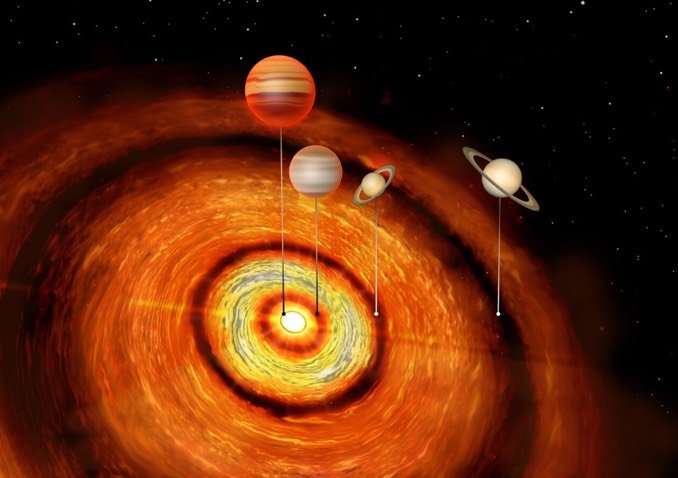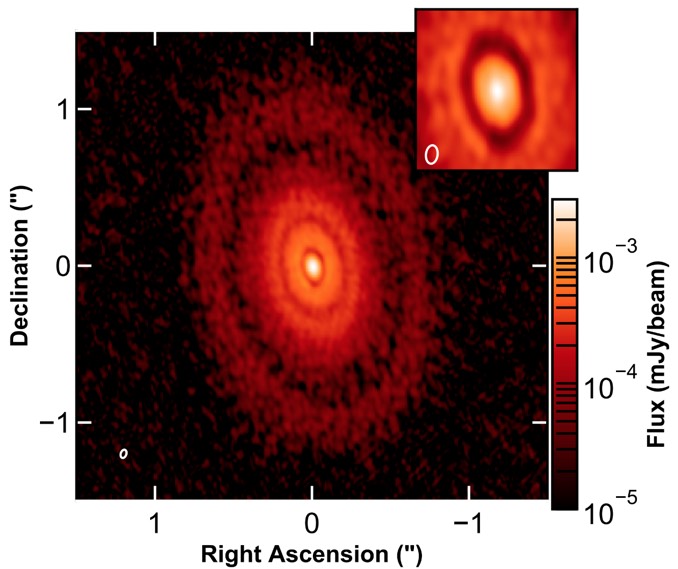
A relatively young 2-million-year-old star known as CI Tau first claimed fame when astronomers detected a “hot Jupiter’ orbiting within a protoplanetary disk. Now, using the Atacama Large Millimetre/submillimetre Array, or ALMA, researchers have found evidence of three more gas giants, raising new questions about how solar systems form and evolve.
The additional planets were inferred from three distinct gaps in the disk that are consistent with the gravitational effects of gas giant worlds clearing out their orbits. The planets’ orbits differ greatly with the closest, the hot Jupiter, orbiting at a distance similar to Mercury’s distance from the Sun while the most distant is three times farther out than Neptune.
The two outer planets have masses similar to Saturn’s while their inner siblings are between one and 10 times the mass of Jupiter. About 1 percent of stars are thought to host hot Jupiters, but most of those suns are hundreds of times older than CI tau.
“It is currently impossible to say whether the extreme planetary architecture seen in CI Tau is common in hot Jupiter systems because the way that these sibling planets were detected, through their effect on the protoplanetary disc, would not work in older systems which no longer have a protoplanetary disc,” said Cathie Clarke of Cambridge University’s Institute of Astronomy.

It is not yet known whether the newly discovered planets played a role in gravitationally driving the innermost planet into its close orbit or whether that mechanism works with hot Jupiter’s in general. It’s also a mystery how the two outer planets formed in the first place.
“Planet formation models tend to focus on being able to make the types of planets that have been observed already, so new discoveries don’t necessarily fit the models,” Clarke said.
“Saturn mass planets are supposed to form by first accumulating a solid core and then pulling in a layer of gas on top, but these processes are supposed to be very slow at large distances from the star. Most models will struggle to make planets of this mass at this distance.”
Additional research is planned.



